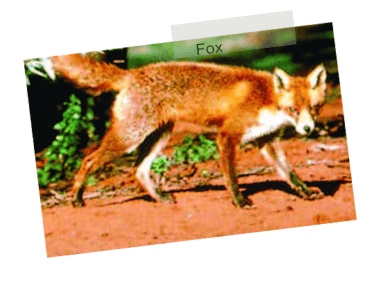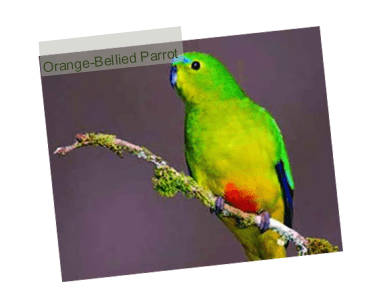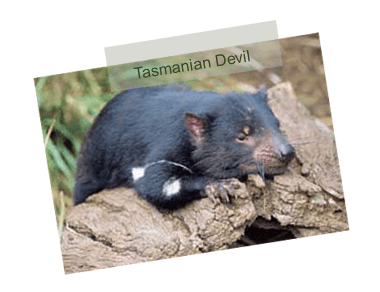Tasmania, Australia’s only island state, is renowned for its dramatic landscapes, diverse vegetation, and abundant wildlife, including unique plant and animal species found nowhere else on earth. The island is home to 19 National Parks, hundreds of reserves, and one of the planet’s last authentic wilderness regions, the Tasmanian Wilderness World Heritage Area. With 4,500 kilometers of dramatic coastline, Tasmania’s marine reserves also preserve an underwater environment of great beauty and invaluable value.
Tasmania’s internationally renowned wilderness and Aboriginal and European heritage attract thousands of visitors each year. The extraordinary natural and cultural values of this island can be experienced in many ways, such as walking, cycling, paddling, fishing, climbing, and driving, offering almost endless possibilities. Leave No Trace is an internationally accepted way of minimizing the impacts on the places we visit, no matter how we choose to experience them. Adhering to the principles of Leave No Trace can help ensure the protection of Tasmania’s irreplaceable wilderness and heritage for the future. Leave No Trace Australia is a national non-profit organization dedicated to promoting and inspiring responsible outdoor travel and recreation through education, research, and partnerships. Leave No Trace encourages all visitors to give special consideration to the protection and care of our natural and cultural heritage places.
As you visit this special country, please be mindful to Leave No Trace.
AREA INFORMATION
TASMANIA’S NATIONAL PARKS:
Tasmania is home to 19 national parks, the Tasmanian Wilderness World Heritage Area, hundreds of reserves, and seven marine reserves.
PARK ENTRY FEES:
Entry fees apply to all national parks in Tasmania. Visitors can purchase park passes at Parks and Wildlife Service offices, Tasmanian Travel Centers, and on the Spirit of Tasmania ferry. A holiday pass is available for visitors, and annual or two-year passes can also be purchased.
DEVIL FACIAL TUMOUR DISEASE:
Tasmanian Devil is the world’s largest surviving carnivorous marsupial. About the size of a small dog, it is a shy, nocturnal animal known for its black coat, guttural screeches, and immensely powerful jaws. Once common throughout Australia, the Tasmanian Devil is now found only in Tasmania.
Devil Facial Tumour Disease (DFTD) is a transmissible form of cancer that affects only Tasmanian Devils and is characterized by tumours around the mouth and head of the animal. Infected animals find it difficult to eat, and death usually results from starvation within a few months of infection.
Since the discovery of DFTD in the mid-1990s, the Tasmanian Devil population has been in continuous decline, and in May 2008, the species was listed as endangered. The Save the Tasmanian Devil Program is a collaborative effort to address the threat posed by DFTD to this iconic Tasmanian marsupial.
For more information on Tasmanian Devils and the Save the Tasmanian Devil Program, visit their website or contact the organization directly.
PHYTOPHTHORA:
Phytophthora cinnamomi is a soil-borne organism that causes root rot disease. It is present in Tasmania and has caused significant damage to the island’s vegetation, including precious plant communities such as moorlands, heaths, and dry eucalypts. Phytophthora can spread through infected soil or plant material moving to uninfected areas. Muddy boots, walking poles, tent pegs, trowels, camera tripods, and vehicle tires can all carry and spread the infection.
To prevent the spread of Phytophthora, stick to designated tracks when bushwalking and clean all gear that may carry soil before and after your trip. Start your walk with clean gear and follow instructions at any wash-down stations you encounter. Remember to wash your gear after your walk.
DRIVE SAFELY AT NIGHT:
Many Tasmanian wildlife species are active at night and are at risk of injury or death when they encounter vehicles on roads. To prevent collisions that could harm wildlife and damage your car, drive slowly at night and be aware of wildlife. Keep a lookout for animals on the sides of the road, especially species such as Tasmanian Devils, which can be difficult to see on the dark, wet road surface.
Pay attention to wildlife warning signs, which are placed in areas known to have higher incidences of animal-vehicle interactions. It’s best to let the animal move off the road before passing, as animals can react differently to approaching vehicles. On roads with steep banks on both sides, animals may become trapped and unable to escape from approaching cars, so take extra care in these areas. Avoid attracting wildlife by not littering, including throwing apple cores and other fruit and vegetable scraps from your car.
If you do hit an animal or come across injured wildlife, safely stop if possible and check if the animal has survived. To transport the animal, keep it in a warm, dark place. Contact the Department of Primary Industries and Water (03 6233 6556) or the nearest Parks and Wildlife Service office as soon as possible.
FOXES IN TASMANIA:
The European Red Fox (Vulpes vulpes) has had a devastating impact on native species throughout Australia since its introduction to the mainland in the mid-1850s. Evidence of the presence of foxes in Tasmania has increased since the late 1990s, although it is unclear how many foxes are currently on the island. To protect Tasmania’s biodiversity, agriculture, and human health, the Fox Eradication Program has been established with the goal of eradicating this invasive species. It is crucial that any sightings or suspected evidence of fox activity be reported immediately. If you believe you have seen a fox, please call the 24-hour Fox Hotline at 1300 FOX OUT (1300 369 688).
AREA INFORMATION CONTINUE…
WALK SAFELY:
When bushwalking, make sure to use logbooks posted at the beginning and end of your trail or in huts along some walks (e.g. the Overland Track). If you plan to visit remote areas of the state, consider carrying an EPIRB (Emergency Position-Indicating Radio Beacon). EPIRBs work by sending a radio signal that helps emergency services locate you in serious emergency situations. Only use them in such situations. If you choose to carry an EPIRB, ensure it is a 406MHz EPIRB, which can be rented at Service Tasmania offices in Hobart, Launceston, Devonport, and Burnie.
WEATHER IN TASMANIA:
Tasmania’s diverse landscape and maritime climate make the weather unpredictable and subject to rapid changes. Snow and storms can occur in the island’s alpine areas unexpectedly and at any time of year. It is important to be prepared by always carrying warm, waterproof, and windproof gear when walking in Tasmania, no matter the season. Before going for a walk, be sure to check the weather forecast for updated information.
ENDEMIC FLORA AND FAUNA:
Tasmania is home to many species of plants and animals that are found nowhere else on the planet. In addition to the iconic Tasmanian Devil, the island is a stronghold for carnivorous marsupials, many of which are now rare, endangered, or extinct in other parts of Australia. Tasmania’s carnivorous marsupials include the Eastern and Spotted-Tail Quoll, Dusky Antechinus, Swamp Antechinus, and White-Footed Dunnart. Tasmania’s rich bird life includes eleven endemic species, including the endangered Orange-Bellied Parrot, one of the world’s largest and rarest birds. The Orange-Bellied Parrot breeds only in coastal southwest Tasmania and spends the winter in coastal Victoria and South Australia. At Melaleuca, in Tasmania’s Southwest National Park, a bird hide has been built specifically to view the birds, which visit the area from mid-October to late March.
Tasmania’s incredibly diverse flora includes the endemic deciduous beech, or Fagus (Nothofagus gunnii), one of Australia’s few winter-deciduous trees. Fagus infuses the Tasmanian highlands with color during its brilliant autumn display, turning from rust-red to brilliant gold from late April to May. It is most easily seen around Lake Fenton in Mt Field National Park. Tasmania’s native conifers include the long-lived King Billy Pine, Pencil Pine, and Celery-Top Pine. The best known of the family is Huon Pine, prized for its fine-grained timber. The oldest dated Huon Pine trees are over 3,000 years of age, making it among the longest-lived organisms on earth. Today’s remnant populations of Huon Pine are well protected within reserves, including the World Heritage Area. Over one million hectares in Tasmania are populated by Buttongrass moorland, areas of low vegetation dominated by sedges and heaths. Although also found in parts of southeast Australia, Buttongrass covers large areas of Tasmania’s west and southwest, where rainfall is highest. Buttongrass moorlands are an important habitat for wildlife, including Bennett’s Wallabies, Wombats, Ground Parrots, Burrowing Crayfish, frogs, lizards, and grasshoppers. It grows in wet, low-nutrient environments and is one of the most fire-adapted ecosystems to have ever evolved.
KEEP WILDLIFE WILD:
Avoid feeding wildlife during your trip. Providing food can make them dependent on humans and can lead to the spread of diseases such as lumpy jaw from consuming an abnormal diet. Ensure that your food is stored securely in your backpack or tent, wash your dishes thoroughly to eliminate food odors from your camping area, strain your washing water, and dispose of all food waste properly.




